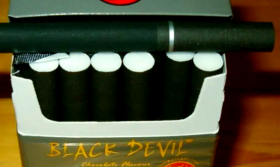Title: The Unseen Peril: How Secondhand Smoke Endangers Concert Hall Staff
The concert hall: a cathedral of sound, where artistry meets architecture to create unforgettable experiences. For the audience, it’s a few hours of escape. For the dedicated staff working behind the velvet ropes—ushers, security personnel, stagehands, bartenders, and administrative workers—it is their workplace. Yet, within this world of cultural enrichment lurks a silent and often ignored occupational hazard: the pervasive threat of secondhand smoke. Despite smoking bans in indoor public areas, the reality for concert venue employees is one of repeated, concentrated exposure, leading to severe and long-term health consequences that the public rarely sees.
The Myth of the "Smoke-Free" Venue
While legislation in many regions has successfully cleared the air inside performance spaces themselves, the problem has merely been displaced, not solved. Designated outdoor smoking areas, often located near employee entrances, exits, and ventilation intakes, become toxic hotspots. Staff are required to work in these zones, checking tickets, managing queues, or taking their own breaks. Furthermore, the post-show exodus often sees crowds of patrons lighting up simultaneously just outside entranceways, engulfing security and usher teams in a dense cloud of smoke as they perform their closing duties.
The theatrical and musical nature of events also introduces unique exposure routes. Certain productions, particularly operas, period plays, and rock concerts, may use theatrical smoke or pyrotechnics. While these are primarily glycol or glycerin-based fluids, the combustion process can produce harmful ultrafine particles and volatile organic compounds (VOCs). More alarmingly, some performances still permit actors or musicians to smoke real tobacco products on stage as a part of their act, justified as "artistic expression." This directly releases carcinogens into the enclosed environment, where ventilation systems then circulate them, exposing every employee in the building.

The Chemical Cocktail and Its Health Impacts
Secondhand smoke is not merely an annoyance; it is a classified Group A carcinogen. It contains over 7,000 chemicals, hundreds of which are toxic, and about 70 can cause cancer. For concert hall staff with chronic exposure, this chemical cocktail has dire implications.
The most immediate effects are acute. Employees report recurring symptoms such as burning eyes, sore throats, nasal congestion, headaches, and dizziness. For those with pre-existing conditions like asthma or allergies, a single shift near a smoking area can trigger severe attacks, leading to respiratory distress and necessitating medication. These acute symptoms are often dismissed as minor inconveniences, but they are the body's first warning signals.
The long-term consequences are far graver. Chronic exposure significantly increases the risk of developing life-threatening conditions.
- Cardiovascular Disease: Inhaling secondhand smoke causes immediate damage to the cardiovascular system, making blood platelets stickier and increasing the risk of heart attacks and strokes. For a staff member working years in this environment, the cumulative damage is substantial.
- Lung Cancer and Respiratory Illness: Non-smokers exposed to secondhand smoke at work increase their risk of developing lung cancer by 20-30%. They are also more likely to suffer from chronic respiratory conditions like COPD and emphysema.
- Reproductive Health Issues: For employees of childbearing age, exposure poses additional risks, including low birth weight, preterm delivery, and developmental complications for their children.
An Issue of Workers' Rights and Ethical Responsibility
The sustained exposure of concert hall staff to secondhand smoke is fundamentally an issue of occupational safety and workers' rights. While a patron might choose to briefly pass through a smoking area, employees have no such choice. Their financial livelihood depends on being present in that hazardous environment. This power dynamic creates a situation where staff may fear speaking out against unsafe working conditions, worried about being seen as difficult or replaceable.
Venue management and production companies have an ethical and, in most jurisdictions, a legal obligation (under Occupational Safety and Health regulations) to provide a safe work environment. Simply complying with the bare minimum of indoor smoking bans is insufficient. This responsibility extends to mitigating all foreseeable health risks, including those from outdoor designated areas and theatrical use.
Towards a Clearer, Healthier Future
Addressing this invisible threat requires a multi-faceted approach that prioritizes staff well-being without compromising the artistic experience.
- Policy Reinforcement and Redesign: Venues must critically assess the placement of outdoor smoking areas, ensuring they are located far from employee workstations, entrances, and air intake vents. Installing physical barriers and powerful local exhaust ventilation can help contain the smoke.
- Theatre-Specific Solutions: The use of real tobacco on stage should be eliminated. Modern special effects can replicate the visual of smoking without the health hazards. If absolutely deemed non-negotiable for artistic integrity, it must be treated as a serious hazardous material operation. This would require closed-set filming, rigorous ventilation protocols, and prior notification and protection for all backstage and technical staff, who often bear the highest exposure in these scenarios.
- Protective Equipment and Health Advocacy: For staff whose roles require them to be near outdoor smoking zones, provision of protective equipment, such as high-quality respirators, should be considered. More importantly, management must foster an open culture where employees can report health concerns without fear of reprisal and have access to regular health screenings.
- Industry-Wide Awareness: Raising awareness within the live events industry is crucial. Unions and guilds representing venue staff are powerful advocates for pushing stricter health and safety standards to the forefront of collective bargaining agreements.
The magic of a live performance should not come at the cost of a worker's health. The applause that echoes through the concert hall is a tribute to the artists on stage, but it is also built on the unseen labor of a dedicated team. Protecting these individuals from the preventable danger of secondhand smoke is not a logistical challenge; it is a moral imperative. It is time to clear the air, ensuring that the environment behind the scenes is as safe and respected as the artistry it enables.














